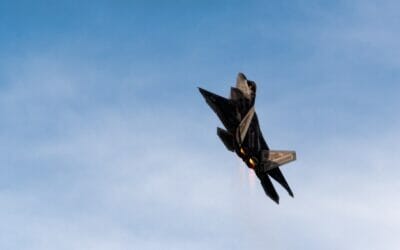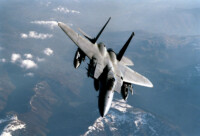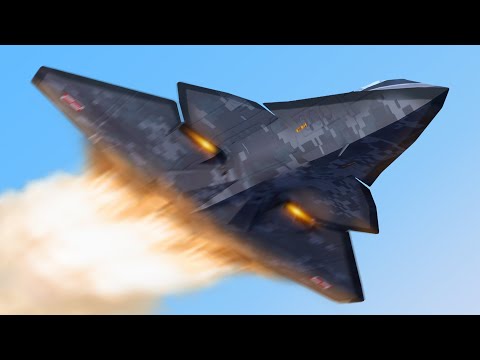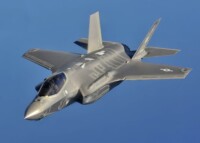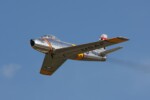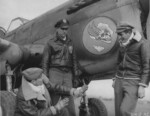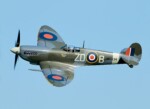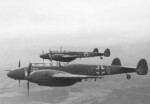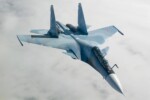How Fast Can a Fighter Jet Fly Across the United States?
8 November 2023 | Updated on February 05, 2024
Have you ever wondered how fast a fighter jet can fly across the United States? Fighter jets are renowned for their incredible speed and agility, allowing them to cover large distances in a remarkably short amount of time. Today, we’ll delve into the world of fighter jet speeds and explore just how quickly these remarkable aircraft can traverse the skies.
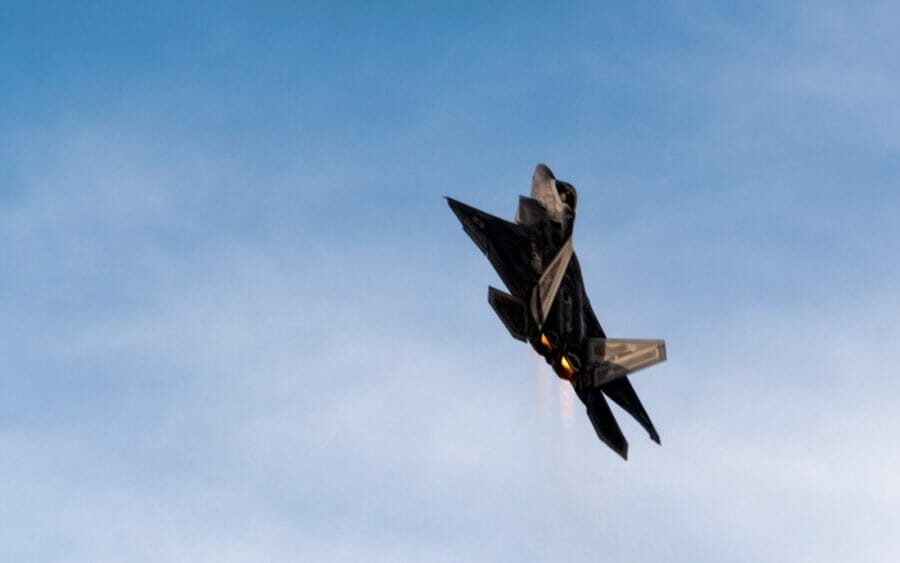

Key Takeaways:
- Fighter jets are capable of reaching speeds exceeding Mach 2.5, allowing them to cover vast distances.
- The fastest fighter jet ever created was the NASA/USAF X-15, which reached a mind-boggling speed of 4,520 mph.
- The top speed of the fastest fighter jet currently in service is 2,190 mph, achieved by the Mikoyan-Gurevich MiG-25 Foxbat.
- Speed is crucial in fighter jets as it enables air superiority, interception of enemy aircraft, and high-speed reconnaissance missions.
- Measuring fighter jet speed involves the use of anemometers, which calculate the aircraft’s speed in relation to the surrounding air.
The Top 10 Fastest Fighter Jets in the World
When it comes to speed, fighter jets are known for pushing the limits of what is possible in aviation. These incredible machines are designed to reach mind-boggling velocities, allowing them to outpace their adversaries and carry out critical missions with precision and agility. In this section, we will explore the top 10 fastest fighter jets in the world, showcasing their impressive speeds and highlighting their capabilities.
The Top 10 Fastest Fighter Jets
| Fighter Jet | Top Speed (Mach) |
|---|---|
| NASA/USAF X-15 | 6.72 |
| SR-71 Blackbird | 3.5+ |
| Lockheed YF-12 | 3.35 |
| MiG-25 Foxbat | 2.83 |
| Bell X-2 Starbuster | 2.87 |
| XB-70 Valkyrie | 3.08 |
| MiG-31 Foxhound | 2.83 |
| F-15 Eagle | 2.5+ |
| F-111 Aardvark | 2.5 |
| Su-27 Flanker | 2.35 |
As the table above demonstrates, these fighter jets are capable of reaching extraordinary speeds, with the NASA/USAF X-15 taking the top spot with its astounding Mach 6.72. Other notable entries include the iconic SR-71 Blackbird and the versatile F-15 Eagle, both capable of surpassing Mach 2.5. These aircraft represent the pinnacle of speed and engineering in the world of fighter jets, continuously pushing the boundaries of what is possible.
With their unrivaled speeds, these fighter jets possess the ability to quickly cover vast distances, intercept enemy aircraft in the blink of an eye, and execute high-speed reconnaissance missions with utmost efficiency. The incredible velocities achieved by these aircraft not only give them a strategic advantage but also showcase the remarkable advancements in aerospace technology that have occurred over the years.
The Importance of Speed in Fighter Jets
Speed plays a crucial role in the design and operation of fighter jets. It is not only about flying fast but also about gaining a tactical advantage in air combat. Fighter jets with higher speeds have the ability to achieve air superiority, intercept and engage enemy aircraft quickly, and evade enemy attacks effectively. The role of speed in air combat cannot be overstated, as it ensures the success of missions and the safety of pilots.
One of the key aspects of speed is the element of surprise. Fighter jets with higher speeds can launch surprise attacks on enemy targets, giving them a strategic edge. The element of surprise allows fighters to strike swiftly and retreat before the enemy can mount a defense. In critical combat situations, quick response times are crucial, and the ability to reach high speeds enables fighter jets to rapidly assess and engage threats, maximizing their chances of success.
Speed is also essential for high-speed reconnaissance missions. Fighter jets equipped with advanced sensors and cameras can gather critical intelligence by reaching high speeds and swiftly covering large areas. The ability to gather real-time information is invaluable in modern warfare, as it provides commanders with accurate and timely situational awareness, enabling them to make informed decisions.
However, it is important to note that increased speed comes with its challenges. Higher speeds require more fuel consumption, which affects the aircraft’s range and endurance. Additionally, the increased velocity places additional stress on the aircraft’s structure, necessitating robust engineering and maintenance to ensure the safety and longevity of the aircraft. Despite these challenges, the importance of speed in fighter jets remains undeniable, as it continues to shape the dynamics of air combat and influence the outcome of military operations.
How Fighter Jet Speed is Measured
Fighter jet speed is measured using anemometers, which are devices that calculate the speed of the aircraft in relation to the surrounding air. These instruments, such as the dynamic pressure anemometer, work by measuring the pressure difference between the air entering the probe and the air flowing around it. By analyzing this pressure differential, the anemometer can accurately determine the speed at which the fighter jet is traveling.
The speed of fighter jets is often expressed in terms of Mach numbers. The Mach concept compares the aircraft’s speed to the speed of sound in the surrounding air. Mach 1 represents the speed of sound, with any speed greater than Mach 1 considered supersonic. For example, if a fighter jet is traveling at Mach 2, it is flying at twice the speed of sound.
Measuring fighter jet speed is crucial for various reasons. It allows engineers and designers to assess the performance capabilities of the aircraft, determine its aerodynamic characteristics, and optimize its design for speed and efficiency. Additionally, accurate speed measurements are essential for flight planning, safety considerations, and comparing the performance of different fighter jet models.


The Different Speeds of Fighter Jets
Fighter jets are versatile aircraft that are capable of operating at different speeds depending on the mission requirements. Understanding the various speeds at which fighter jets can operate is essential for evaluating their capabilities and effectiveness in different scenarios.
Cruise Speed
Cruise speed refers to the speed at which a fighter jet can fly stably and efficiently for extended periods of time. This speed allows the aircraft to cover long distances while conserving fuel. Cruise speed is typically lower than the maximum speed of the aircraft, enabling it to maintain a steady pace during routine operations such as patrol missions or long-range flights.
Top Speed
The top speed of a fighter jet represents the maximum speed that it can achieve in flight under normal conditions. This speed is often measured in terms of Mach numbers, with Mach 1 representing the speed of sound. Fighter jets can reach speeds greater than Mach 1, with some of the fastest models capable of exceeding Mach 2. Achieving top speed allows the aircraft to rapidly close the distance to a target or intercept enemy aircraft.
Maximum Speed
Maximum speed refers to the highest speed that a fighter jet can attain under specific conditions. Factors such as altitude, temperature, and payload can affect the maximum speed capabilities of an aircraft. The ability to reach maximum speed is critical for quick response times and high-speed maneuvers during combat situations. It is an important factor in determining the agility and performance of fighter jets.
Rate of Climb
The rate of climb measures how quickly a fighter jet can ascend in the air. It is a crucial factor in evaluating the aircraft’s ability to gain altitude rapidly, which is essential for tactics such as aerial combat and evading enemy attacks. A high rate of climb allows a fighter jet to gain a tactical advantage by quickly positioning itself at a higher altitude, providing a better vantage point and potentially increasing its chances of success in engagements.
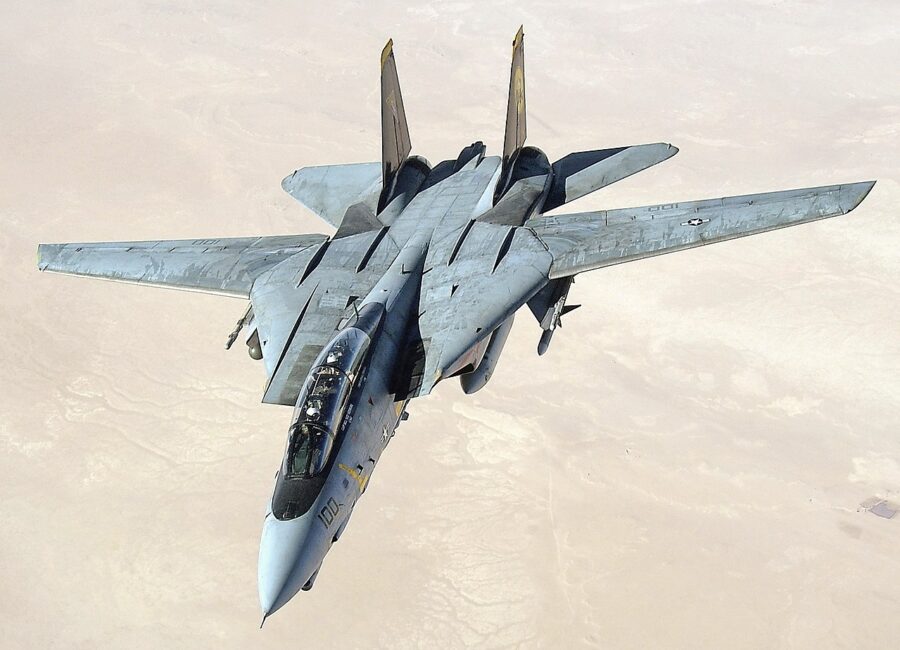

U.S. Navy photo
The Fastest Fighter Jets Still in Service
The world of fighter jets is constantly evolving, with advancements in technology pushing the boundaries of speed and performance. Among the fastest fighter jets currently in service are the F-22 Raptor, Sukhoi Su-27, and Eurofighter Typhoon, each capable of reaching impressive velocities. These aircraft continue to play a critical role in modern air forces around the world.
The F-22 Raptor, operated by the United States Air Force, is renowned for its air superiority capabilities. With a top speed of Mach 2, this stealthy fifth-generation fighter jet combines speed, agility, and advanced avionics to dominate the skies. Its unmatched speed allows it to quickly intercept enemy aircraft, providing a significant advantage in combat situations.
The Sukhoi Su-27, a Russian fighter jet, is another high-speed marvel. With a top speed of Mach 2.35, it is widely regarded as one of the fastest in service. The Su-27, known for its maneuverability and long-range capabilities, has been a mainstay of the Russian Air Force since its introduction in the 1980s. Its speed and versatility make it a formidable opponent in air-to-air combat.
The Eurofighter Typhoon, a collaborative effort between several European nations, is also among the fastest fighter jets currently in use. With a top speed of Mach 2 and advanced aerodynamics, the Typhoon excels in both air-to-air and air-to-ground missions. Its speed, combined with its advanced sensor suite and weapon systems, allows for rapid response and precise engagement of targets.
Conclusion
In conclusion, fighter jets are marvels of engineering capable of reaching incredible speeds. Their ability to exceed Mach 2.5 allows them to cover vast distances in a short amount of time, making them indispensable in various military operations. Whether it’s achieving air superiority, intercepting enemy aircraft, or performing critical missions, speed is a vital component of a fighter jet’s success.
The top 10 fastest fighter jets in the world, such as the X-15 and SR-71 Blackbird, showcase the impressive capabilities of these aircraft. The measurement of fighter jet speed using anemometers and the Mach concept allows for accurate assessment and comparison of their performance.
The speed of fighter jets is not without its challenges, including higher fuel consumption and increased stress on the aircraft structure. However, the importance of speed in air combat cannot be overstated, as it provides the necessary agility, maneuverability, and response times needed in critical situations.
FAQ
How fast can a fighter jet fly across the United States?
Fighter jets are capable of reaching incredibly high speeds, with some models exceeding Mach 2.5. This means they can cover large distances in a relatively short amount of time. However, the exact speed at which a fighter jet can fly across the United States would depend on various factors such as the specific model of the jet, weather conditions, and mission requirements.
What are the top 10 fastest fighter jets in the world?
The top 10 fastest fighter jets in the world include the X-15, SR-71 Blackbird, MiG-25 Foxbat, F-15 Eagle, and others. These aircraft are capable of reaching speeds ranging from Mach 2.35 to Mach 6.72, with the X-15 holding the record for the highest speed ever recorded by a crewed, powered aircraft.
Why is speed important in fighter jets?
Speed plays a crucial role in the design and operation of fighter jets. It allows them to achieve air superiority, quickly intercept and engage enemy aircraft, evade enemy attacks, and perform high-speed reconnaissance missions. Additionally, speed is essential for surprise attacks and quick response times in critical combat situations.
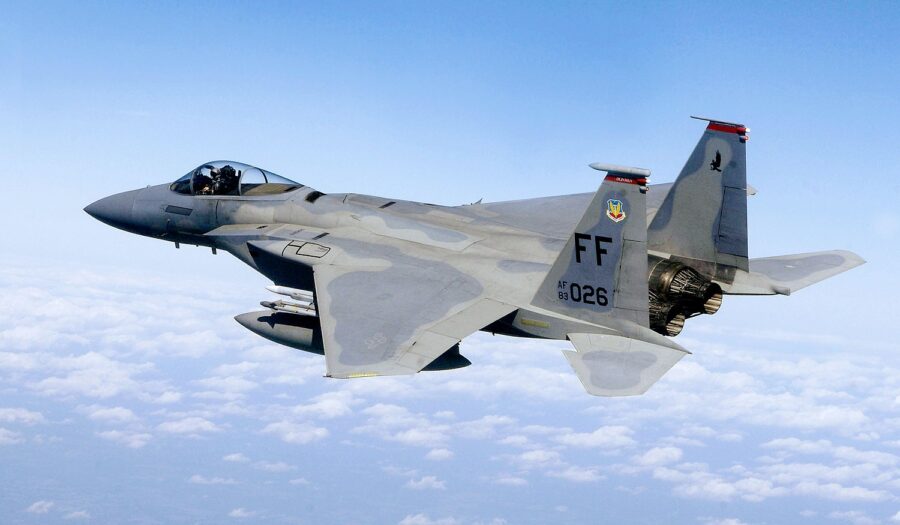

How is fighter jet speed measured?
Fighter jet speed is measured using anemometers, which calculate the speed of the aircraft in relation to the surrounding air. Anemometers, such as the dynamic pressure anemometer, measure the pressure difference between the air entering the probe and the air flowing around it. The speed can be measured in terms of Mach numbers, which compare the aircraft’s speed to the speed of sound in the surrounding air.
What are the different speeds of fighter jets?
Fighter jets have different speeds depending on their mission requirements. Cruise speed is the speed at which a fighter aircraft can fly stably and efficiently for long periods of time. Top speed is the maximum speed a fighter jet can achieve in flight, while maximum speed refers to the highest speed attainable under specific conditions. Rate of climb measures how quickly a fighter aircraft can ascend in the air.
Which fighter jets are the fastest and still in service?
The fastest fighter jets that are still in service include the F-22 Raptor, Sukhoi Su-27, and Eurofighter Typhoon. These aircraft have top speeds ranging from Mach 2 to Mach 2.5 and are currently used by various air forces around the world.




















